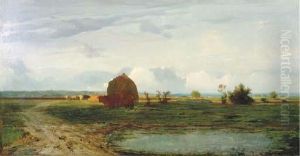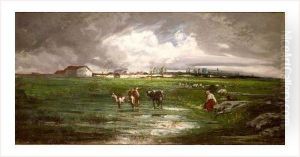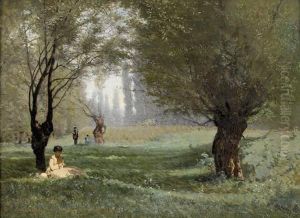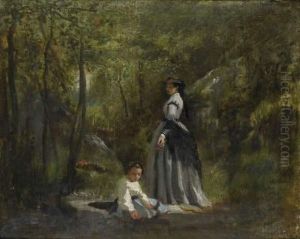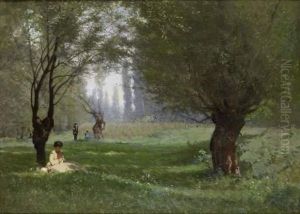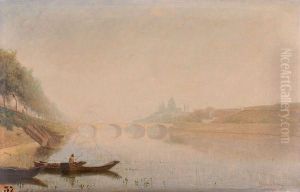Fleury Chenu Paintings
Fleury Chenu was a French painter born in 1832, whose work is often associated with the realism movement, a trend that aimed to depict subjects as they are, often focusing on the everyday lives of people, without idealization or romantic embellishment. Although not as widely recognized as some of his contemporaries, Chenu's contributions to the art world during the 19th century were notable for their focus on realism and the depiction of rural and working-class life in France.
Chenu's upbringing and early life played a significant role in shaping his artistic direction. Born into a period of significant social and political change in France, his works often reflected the conditions and experiences of those living through the transformations of the French countryside and industrialization. He trained in Paris, where he was exposed to the burgeoning realism movement, which was gaining momentum as artists sought to break away from the classical and romantic traditions that had dominated French art.
Throughout his career, Chenu exhibited his works in various Salons, the official art exhibitions of the Académie des Beaux-Arts in Paris, which were critical for artists seeking recognition and patronage. His paintings typically depicted scenes of rural life, including farmers, landscapes, and village scenes, characterized by a keen eye for detail and a compassionate portrayal of his subjects. Chenu's ability to capture the essence of rural life, with all its hardships and beauty, resonated with viewers and critics alike, earning him a place among the notable realist painters of his time.
Despite his contributions to the art world, Fleury Chenu's name did not achieve the same level of fame as some of his peers, such as Gustave Courbet or Jean-François Millet. However, his work remains an important part of the study of 19th-century French realism, offering insights into the social and cultural dynamics of the era. Chenu passed away in 1885, leaving behind a body of work that continues to be appreciated for its authenticity and artistic merit. His paintings are held in various collections and museums, where they serve as a testament to his skill and dedication to portraying the reality of his time.
